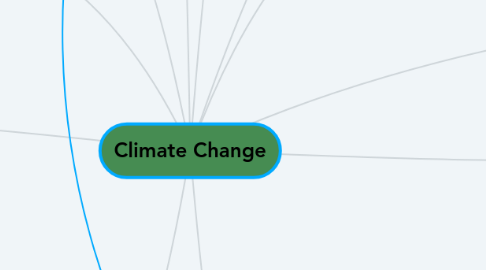
1. Climate
1.1. climatographs
1.2. long period of time
1.3. average
2. Weather
2.1. localized
2.2. environmental conditions
2.3. day to day
3. Biomes
3.1. Permanent Ice
3.1.1. lichens, mosses, polar bears
3.1.2. polar ice caps
3.1.3. little precipitation, more in summer months
3.2. Boreal Forest (Taiga)
3.2.1. cool, forest
3.2.2. rodents, snowshoe hares, lynx, ermine
3.2.3. coniferous trees
3.3. Temperate Deciduous Forest
3.3.1. many kinds of trees
3.3.2. Eastern Canada
3.3.3. wolves, deer, small mammals
3.3.4. even distribution of precipitation
3.4. Temperate Grassland
3.4.1. grass is main plant life
3.4.2. grasshoppers, bison, mice, snakes
3.4.3. also known as Prairies
3.4.4. hot summers, cold winters
3.5. Tundra
3.5.1. cold, far North
3.5.2. permafrost
3.5.3. very few trees
3.5.4. musk oxen, arctic foxes, snowshoe hares, owls
3.5.5. little precipitation
4. Greenhouse Gases
4.1. carbon dioxide (CO2)
4.2. nitrous oxides (NOx)
4.3. water vapour (H2O)
4.4. methane (CH4)
4.5. carbon cycle
5. Greenhouse Effect
5.1. 100% natural
5.1.1. keeps the Earth warm enough to live on
5.2. anthropogenic
5.2.1. burning fossil fuels
5.2.2. greenhouse gas increase
5.2.3. means "human activity"
5.2.4. ecological or carbon footprint
6. Thermal Energy
6.1. conduction
6.1.1. kinetic energy
6.1.2. solids
6.1.3. direct contact
6.2. radiation
6.2.1. infrared radiation
6.2.2. works in a vacuum
6.3. convection
6.3.1. liquids and gases
6.3.2. visible & infrared radiation
6.3.3. not all energy is absorbed
6.3.3.1. albedo
6.4. different surfaces
6.4.1. temperature responses
6.5. distribution
6.5.1. equatorial regions
6.5.2. position of continents
7. Effects
7.1. loss of animal habitats
7.1.1. polar bears
7.1.2. extinction
7.2. thermal expansion of water
7.3. rising sea levels
7.3.1. more acidic oceans
7.4. melting ice sheets & glaciers
7.5. precipitation
7.5.1. droughts, floods, more extreme/intense natural disasters
7.6. risk to human health
7.7. rising tempeartures
8. Past
8.1. proxy records
8.1.1. ice cores, tree rings, coral reefs
8.2. how greenhouse gas levels have risen
9. "Spheres"
9.1. on Earth
9.1.1. biosphere (life), hydrosphere (water), lithosphere (crust), atmosphere (gas)
9.2. in atmosphere
9.2.1. troposphere, stratosphere, mesosphere, thermosphere, exosphere
10. LOWERN
10.1. Latitude
10.1.1. closer to equator = colder
10.2. Ocean Currents
10.2.1. temp of ocean affects air masses passing over
10.3. Winds
10.3.1. move air masses affecting weather
10.4. Elevation
10.4.1. increasing elevation = colder
10.5. Relief
10.5.1. mountain ranges
10.5.2. windward side = warm and wet
10.5.3. leeward side = warm and dry
10.6. Nearness to Water
10.6.1. water has a moderating effect
11. Components of Earth's Climate
11.1. Lithosphere
11.1.1. land formations affect air movement
11.1.2. windward & leeward side of mountains
11.2. Sun
11.2.1. forms of solar energy
11.2.1.1. ultraviolet radiation, visible light, infrared radiation
11.2.2. when rays hit a particle...
11.2.2.1. absorbed, transmitted, reflected
11.3. Configuration of Land Masses
11.3.1. Pangea
11.3.2. movement of air currents
11.4. Hydrosphere
11.4.1. all water on Earth
11.4.2. absorb and reflect Sun's energy
11.5. Atmosphere
11.5.1. protective layer
11.5.2. layer of mixed gases
